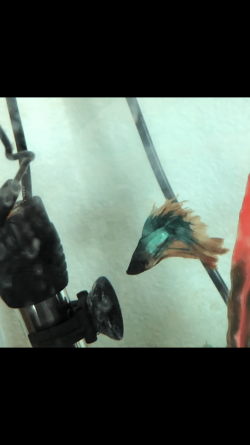Hi everyone, I’m new to this forum and was looking for some advice on my betta Leo.
This morning when I was feeding him, I noticed grayish, whitish splotches on his upper body and face. He doesn’t seem to be acting differently from normal, but the sudden appearance of these discolorations worry me. He’s a little over 2 years old now and I know some discoloration can be due to age, but I doubt that happens overnight.
I tested my water with my API test kit and got somewhere between 0 and 0.25 ppm ammonia, 0 ppm nitrate and about 10 ppm nitrate. Today I performed a water change, and I saw on some other sites that aquarium salt can help with recovery from various diseases, so I followed the directions on the container to add 2 tbsp of salt when I did my water change.
My tank is 10 gallons, I have a couple anubias nana plants I added about a month ago, and I have 5 cory catfish that seem to be doing just fine. I’m also consistent about doing weekly water changes of about 30% and try to keep my tank pretty clean (other than some of the pesky algae that grows on my rocks). The only other thing I can think to mention is that I noticed a bit of fin rot in May, but Leo’s fins seem to be grown back more now from using API Stress Coat during water changes.
Any suggestions? I attached some photos of him I just took, as well as a photo for reference as to what he looked like a couple months ago (sorry for the poor quality on that one)
This morning when I was feeding him, I noticed grayish, whitish splotches on his upper body and face. He doesn’t seem to be acting differently from normal, but the sudden appearance of these discolorations worry me. He’s a little over 2 years old now and I know some discoloration can be due to age, but I doubt that happens overnight.
I tested my water with my API test kit and got somewhere between 0 and 0.25 ppm ammonia, 0 ppm nitrate and about 10 ppm nitrate. Today I performed a water change, and I saw on some other sites that aquarium salt can help with recovery from various diseases, so I followed the directions on the container to add 2 tbsp of salt when I did my water change.
My tank is 10 gallons, I have a couple anubias nana plants I added about a month ago, and I have 5 cory catfish that seem to be doing just fine. I’m also consistent about doing weekly water changes of about 30% and try to keep my tank pretty clean (other than some of the pesky algae that grows on my rocks). The only other thing I can think to mention is that I noticed a bit of fin rot in May, but Leo’s fins seem to be grown back more now from using API Stress Coat during water changes.
Any suggestions? I attached some photos of him I just took, as well as a photo for reference as to what he looked like a couple months ago (sorry for the poor quality on that one)
Attachments
-
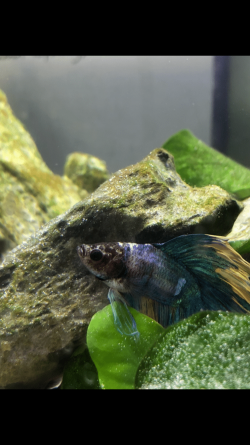 EB584F81-B3E1-455B-850C-019F50D64117.png398.4 KB · Views: 50
EB584F81-B3E1-455B-850C-019F50D64117.png398.4 KB · Views: 50 -
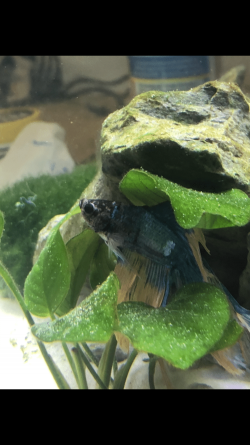 59CAE93B-1E5B-45E9-9346-53C2AE83BC54.png395.3 KB · Views: 46
59CAE93B-1E5B-45E9-9346-53C2AE83BC54.png395.3 KB · Views: 46 -
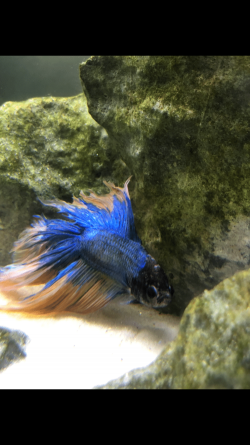 5EBB549F-537C-4C69-AE4A-ED1455B862AF.png401.8 KB · Views: 45
5EBB549F-537C-4C69-AE4A-ED1455B862AF.png401.8 KB · Views: 45 -
 8545121F-F600-4D57-9CAC-546F6AEB6D01.png422.1 KB · Views: 44
8545121F-F600-4D57-9CAC-546F6AEB6D01.png422.1 KB · Views: 44 -
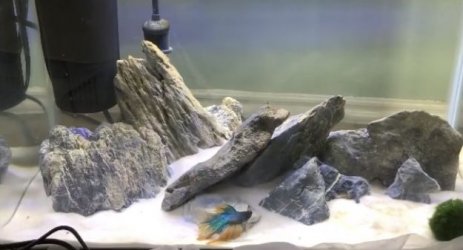 CD7FC694-A351-4975-BBB6-39E11293455B.jpeg32.3 KB · Views: 47
CD7FC694-A351-4975-BBB6-39E11293455B.jpeg32.3 KB · Views: 47



